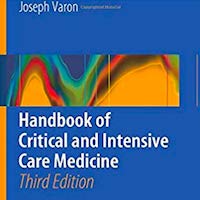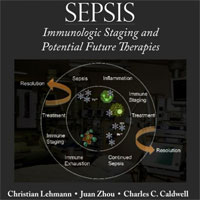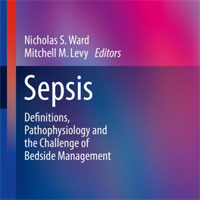Tag: oxygenation
ECMO-Extracorporeal Life Support in Adults
Extracorporeal membrane oxygenation (ECMO) has been in clinical use for some 40 years, but it is only in the past decade that its application in the treatment of life-threatening circulatory and respiratory failure has truly... read more

Rib-Indexed POCUS vs. Chest X-Ray for Lung Recruitment Assessment in Ventilated Neonates with Moderate-Severe ARDS on Pulmonary Surfactant Therapy
Rib-indexed posterior approach POCUS is a reliable, radiation-free modality for real-time lung recruitment assessment in neonates with NARDS, demonstrating noninferiority to CXR. Notably, our study is the first to propose... read more
Causes of Death in Patients Undergoing ECPR
Refractory shock was the leading cause of death among our cohort of extracorporeal cardiopulmonary resuscitation (ECPR) patients, followed closely by neurological complications, while other causes are rare. In this post-hoc... read more
Mechanical Power Impact Normalized to Predicted Body Weight on Outcomes in Pediatric ARDS
Higher mechanical power (MP) was associated with fewer ventilator (VFD) and ICU free days (IFD). The causal effect of MP on VFD and IFD was fully mediated by the impairment in oxygenation. This is a post-hoc analysis of... read more
Clinical Respiratory Anatomy and Physiology in the ICU: Anatomophysiopathology and gasometry of patients on invasive mechanical ventilation
Breathing is a physiological process that is fundamental to life. The respiratory system can be likened to a vital pump allowing the exchange of gases between the cells of an organism and the external environment. A number... read more
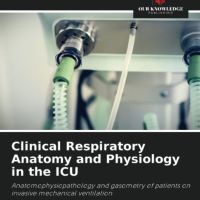
Ventilator Management: A Pre-Hospital Perspective
The goal of this book is to provide the most up to date information on mechanical ventilation based on current research, evidence based practice and my experiences as a flight paramedic and educator. A comprehensive look... read more
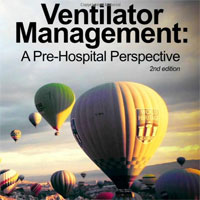
VA-ECMO and Pulmonary Reperfusion
The study by Stadlbauer and colleagues provides further evidence that veno-arterial extracorporeal membrane oxygenation (VA-ECMO) should—whenever necessary—be used, as a bridge to pulmonary reperfusion, but not as a bridge... read more
ECMO in the Adult Patient (Core Critical Care)
Extracorporeal membrane oxygenation (ECMO) is developing rapidly, and is now part of the toolkit for the management of all patients with severe respiratory or cardiac failure. Clinicians of all disciplines are in need of... read more
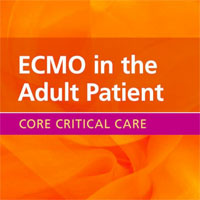
Predicting Renal Outcomes in Cardiac Surgery Using Intraoperative Renal Near-Infrared Spectroscopy Monitoring
This study shows that intraoperative monitoring of near-infrared spectroscopy (NIRS) values and monitoring of critical thresholds may be an important tool in predicting the development of acute renal failure (ARF) and other... read more
Flow Control Ventilation in ICU
Flow control ventilation is an innovative technique of mechanical ventilation with a potentially lung protective characteristics. The constant inspiratory and expiratory flow, no ventilation pauses, and inspiration to... read more
Unsupervised Multi-modal ML Approach for Robust CPR Signal Denoising
The significance of denoising biomedical signals, particularly in crucial life-saving interventions like cardiopulmonary resuscitation (CPR), cannot be overstated, as the accuracy and reliability of CPR data can be a matter... read more
NHF Oxygen During Apnoea on Hypoxemia and Intubation Success in Pediatric Emergency and ICU
The use of nasal high-flow (NHF) during emergency intubation in children did not result in a reduction in hypoxemic events or an increase in the frequency of successful intubation on the first attempt. However, in the... read more
Airflow Patterns and Adaptive Attachment Ventilation with Deflectors
A novel ventilation mode was introduced and investigated by a series of experiments under isotherm condition, focusing on elucidating the airflow patterns and characteristics associated with this mode. Semi-empirical equations... read more
Nebulized Long-Acting Bronchodilators to Treat ARF in an Older Patients
Although long-acting bronchodilators are not approved to treat acute respiratory failure (ARF), the older adult in this case clinically improved after three doses of revefenacin and arformoterol. Additional studies are... read more
Late Hemorrhagic Complication and Unilateral Neck Edema Related to Cannulation in VV-ECMO
This is a rare case of delayed acute unilateral neck edema that developed during veno-venous extracorporeal membrane oxygenation (VV-ECMO). This case underscores the importance of considering a wide range of differential... read more
Resource Utilization Associated with ECMO vs. Microaxial Flow Pump for Infarct-related Cardiogenic Shock
Microaxial flow pump was associated with lower resource utilization compared to venoarterial extracorporeal membrane oxygenation (VA-ECMO). Resource utilization should be incorporated in prospective RCTs and taken into account... read more
Central vs. Peripheral VA-ECMO Cannulation on Postoperative Graft Dysfunction in Lung Transplantation
Lung transplantation (LTx) is the definitive treatment for end-stage pulmonary diseases, with venoarterial extracorporeal membrane oxygenation (VA-ECMO) used as a common perioperative support. However, it remains unclear... read more
Extracorporeal Life Support: The ELSO Red Book, 6th Edition
Written by over two hundred experts from around the world, this new edition is the definitive reference text on Extracorporeal Life Support, providing both the latest evidence and practical advice on how to clinically manage... read more
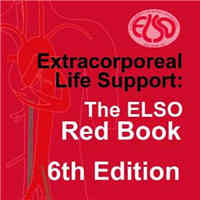
Predicting Sudden Decrease in Oxygenation in Mechanically Ventilated ICU Patients as a Surrogate Marker for ARDS
Acute Respiratory Distress Syndrome (ARDS) is a life-threatening form of respiratory failure characterized by widespread lung inflammation that severely impairs oxygenation. Affecting millions of patients worldwide, ARDS... read more
Multi-dimensional Outcomes Following ECPR
Recent trials suggested that extracorporeal cardio-pulmonary resuscitation (ECPR) with veno-arterial extracorporeal membrane oxygenation (VA-ECMO) or "ECMELLA" (VA-ECMO plus Impella) may improve short-term survival and neurological... read more
New Insights: Inhaled Nitric Oxide in Severe COVID-19 Patients
This study provides novel insights into the use of inhaled nitric oxide in severe ARDS COVID-19 patients. Specifically, we demonstrate that the iNO effect of oxygenation improvement is delayed with a prolonged feature that... read more
Factors Associated with Delayed Extubation in Post Cardiac Surgery Patients
The process of extubation is a crucial phase in postoperative care. By comprehending the elements that impact DE, healthcare providers can effectively allocate medical resources to enhance the success of weaning, extubation,... read more




